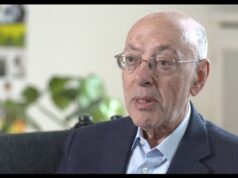Authored by Eddy Ng, Queen’s University, Ontario
In the business world, the adage often holds true: the buck stops at the desk of the chief executive officer. That’s the way accountability should work.
But does the proverbial buck start there too? If CEOs set the course for corporate priorities, values and intentions, will the rest of the organization follow suit?
CEOs have powerful leverage to drive organizational change — if they choose to use it. On the issue of workplace diversity and inclusion, corporate leadership so far has been a mixed bag. Despite the right words and intentions, progress has been slow.

But even for those in front on the issue, it’s a challenge to convert good intentions to new realities in offices and on shop floors. Too often, responses are short-term and reactive to explosive events rather than long-term and systemic.
What explains this disconnect between words coming out of the C-suite and actions within organizations?
Managers, not CEOs, Oversee Diversity
In organizations, the people charged with implementing diversity, or any human resources policy, are managers, not senior executives.
Managers have a lot on their plates and considerable discretion on whether and how to implement organizational policies and practices.
They may hear their CEO say something positive about diversity and conclude that the CEO takes it seriously and that they must take it seriously as well. Or they may figure that the CEO is merely reading a script prepared by public relations teams and is going through the motions to please shareholders.
_____
READ ALSO: Women in Boardrooms: After Ten Years of Equality Drives, Time for Quotas
_____
How managers assess their CEO’s true intentions is crucial to understanding whether an organization’s diversity agenda will be followed.
That is a key insight that came out of a study I conducted with Greg Sears from Carleton University. We looked at what CEOs say versus what they do. We surveyed their direct reports — vice-presidents and directors — and asked them to assess their CEOs’ commitment to diversity.
We were interested not in just what they heard but in what they observed in the CEOs’ actions. And then we studied the outcomes — the amount of diversity policies and practices being implemented.
CEOs must Show they’re Serious
We found that when HR managers perceived the CEO to be committed to diversity through visible actions, the organization reported more diversity initiatives. What the CEO says is important, but HR managers must perceive that the CEO is serious before they implement any of those policies. And CEOs must sustain that effort for HR managers to continue to be committed to diversity.
CEOs do not have to buy into the business value of workplace diversity to be effective leaders on this issue. Some are true believers and others aren’t. Or the organizations they lead may lack economic motives or public mandates.
But for CEOs who don’t believe in the business case for diversity, our study found that if they have strong moral values — which can come from their religion, family, or elsewhere — they are much more likely to display pro-diversity behavior.
If this is so, the question then becomes: How do CEOs clearly signal they are serious about diversity and inclusion in a way that compels managers to actually follow through?
The most convincing way to catch people’s attention is to hold them accountable by tying their job performance and compensation to diversity targets. Otherwise, advancing the diversity agenda is on a best-effort basis.
_____
READ ALSO: Why Strategic Human Capital Management is the new Black
_____
An example of a supposed best-effort attempt is contained in the common argument we hear that “there are no qualified candidates in the pipeline.” Managers are quick to absolve themselves by insisting they advertised for diverse candidates or hired consulting firms to help but couldn’t find anyone. But when their year-end merit bonus is tied to diversity targets, managers expend the effort to make sure those targets are met.
Linking Diversity to Compensation
If it’s so effective to tie managers’ compensation to diversity-related goals, one wonders why corporate boards don’t do the same for CEO compensation. Some are starting to do just that, but not many.
One reason may be the prevalence of interlocking board membership, in which board members are CEOs or senior executives of other corporations. It’s a clubby community, mostly made up of white men. They avoid tying compensation to diversity-related goals, because — guess what? — they are difficult to achieve.
Fortunately, there are investors and legislative pressures for greater diversity on corporate boards. As we gain a critical mass of racialized minorities, women, and other groups under-represented in top governance bodies, there is hope that the situation will improve.
That critical mass is not just one or two lone voices but requires at least three board members from under-represented groups to see real and lasting change.

Let’s be clear, though — even if a board partly ties CEO compensation to diversity targets, the CEO’s role in reaching those targets is as an initiator and a supporter, not as an implementer. The CEO’s priority is to walk the talk, to do what they can to convince those who carry out the diversity programs that they are serious — both today and tomorrow.
This shouldn’t be too much to ask. CEOs earn their executive position partly from their skills at persuasion. They should spread some of that pixie dust to enrich their organization’s workforce and the community in which it operates.
Eddy Ng, Smith Professor of Equity and Inclusion in Business, Queen’s University, Ontario
This article is republished from The Conversation under a Creative Commons license. Read the original article.








